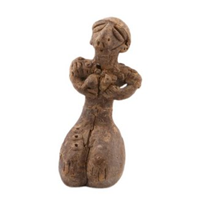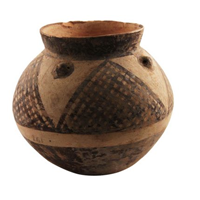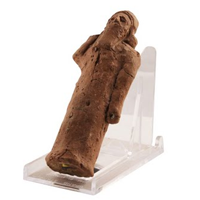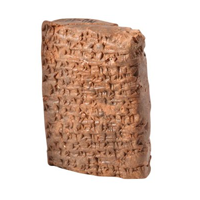In Baghdad
Sarah Birke
The Iraq National Museum reopened on 28 February. Many of the treasures of ancient Mesopotamia are in the British Museum or the Pergamon in Berlin, or were lost to looting after the 2003 invasion, but some wonderful objects are now on show in Baghdad. I visited last week. As I was looking at pieces of Iraq’s great civilisations in glass cases, the extremists of Daesh (as the Islamic State is known in Arabic) were smashing up the original sites for being idolatrous.
According to the Iraqi antiquities and tourism minister, they ran over Nimrud with bulldozers. Artefacts from the ancient Assyrian capital (founded c.1250 BC) are preserved in the museum in Baghdad.
There’s also a room dedicated to Hatra, another settlement with a 6000-year history, also attacked by Daesh. On the freshly painted walls are pieced-together fragments of beautiful reliefs from ancient mosques in Mosul, now Daesh’s Iraqi base, where they took sledgehammers to the museum and library.
Osama al-Nujaifi, Iraq’s vice president, told me that 30 mosques, some more than 1000 years old, had been destroyed in Mosul. His brother is the governor of Nineveh province, of which Mosul is the capital. Their family is from the city. Daesh members have smashed up churches there too, erasing the signs of the once-cosmopolitan Nineveh plain from which minorities (and now Sunni Muslims) have been driven out in their thousands.
People feel squeamish about fretting over stones when people are dying. The American-led coalition in Iraq has so far refused to carry out airstrikes to protect them. But Iraqis find common cause in their heritage. They are proud to be descendants of the world’s first settled civilisations in Mesopotamia. Dedicated archaeologists have worked in dangerous conditions to rehabilitate sites such as the Sumerian city of Ur in southern Iraq, next to land used as a base by the Americans in the 2003 war.
The monuments are part of the world’s shared history, too. Across the region, ruins stand largely unprotected, a blessing for visitors and curse for conservationists. Visitors to Stonehenge follow a marked pathway that leads out through a gift shop; I used to clamber freely around Palmyra in eastern Syria, with the occasional vendor on camel or horseback giving chase for a hard sell.
The Assyrian winged bulls in the museum in Baghdad, half man, half animal, were chiselled out during wartime. There is a statue from the period of a man protecting a small child between his hands. Looking at a set of Sumerian statues of various gods, I wished away the panels explaining what they represented, in case extremists one day came in to destroy them in the much maligned name of Allah – as if they would pause to read them.



